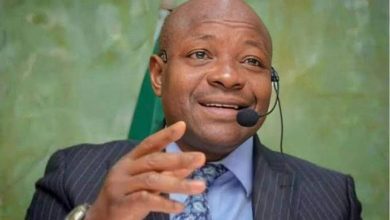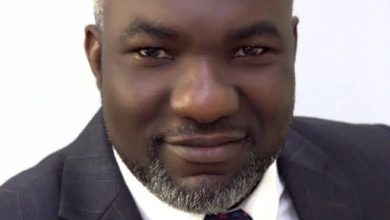How Fashion Brings My Ideas to Life – Ajayi

Fashion designer, fashion entrepreneur, and fashion educator Oluwakemi Ajayi, who is located in Lagos, is the Creative Director and co-founder of the women’s clothing brand Wearlala. In this interview, SEYI TAIWO-OGUNTUASE discusses her path to fashion, the reasons for her decision to become a fashion coach, and her perseverance, among other topics. Extracts:
How did you enter the fashion industry?
For me, fashion design allows me to showcase my creative side. I have always had a strong interest in fashion and have been fascinated by textiles and apparel since I was a small child.
Making aesthetically pleasing designs allows me to express and put my creativity and artistic abilities to life.
In addition, I’ve always wanted to start my own business because it would allow me to create a profitable brand.
Additionally, my mother, who is an art enthusiast, pushed me to enroll in a dressmaking and fashion design course while I was a university student.
On holidays, I typically attend the classes. As time passed, I became really passionate about creating clothes and textiles, including dressmaking and pattern drafting.
Because it enables me to express my ideas and realize my visions, I chose to make fashion design my career after I eventually became proficient in the field.
Please elaborate on your brand.
My spouse, who is a co-founder of the firm, came up with the moniker Wearlala.
We chose the name Lala, which is derived from my nickname Kemolala, since we wanted it to be able to be used to any stylish object, not just clothing.
As a result, we created WEARLALA, a concept that combines the words wear and lala.
Custom clothing for ladies and children is the specialty of the women’s wear firm Wearlala Fashion.
The brand’s foundation is innovation and the use of high-quality, eco-friendly textiles. For those interested in mastering the craft of dressmaking, it also hosts training sessions and workshops.
What made you want to start a dressmaking business or work as a fashion instructor?
I’m naturally pretty good at teaching. In addition to creating a lot of fashion content and tutorials for other dressmakers who struggled with garment construction and pattern drafting procedures, I used social media to advertise my work when I was still a freelance dressmaker and fashion designer.
Over time, many people found my online tutorials to be very beneficial; therefore, it became necessary to develop in-person training and seminars.
I felt fulfilled by sharing my knowledge with others and had the opportunity to interact more closely with other aspiring dressmakers.
What was your initial entry into the field?
In 2018, I formally registered my business, but I have been a freelance dressmaker and designer since 2010.
The goal of the female custom clothing firm Wearlala is to strike a balance between African culture and westernization. It is driven by a great enthusiasm for creation.
Social media’s influence allowed us to establish a solid presence in the sector.
In addition to designing and producing personalized apparel for our many clients, I also encourage aspiring designers by posting a ton of fashion-related information on Facebook, Instagram, and YouTube, such as sewing guides and do-it-yourself projects.
What is the process by which you keep abreast of current fashion trends and apply them to your designs?
I try to stay up to date by keeping up with the latest trends and drawing inspiration from fashion magazines, social media, and fashion databases such as Business of Fashion, Vogue Business, and WG:SN. There are subscription-based companies that provide future insights and innovations in fashion-related topics and other sectors, as well as trend forecasting companies that help you stay ahead of the curve.
Read Also: First Lady Backs TB Fight with N1bn, 10 Diagnostic Machines to FCTA
How did you plan and organize your classes on dressmaking to guarantee that students were given thorough instruction and growth?
Notwithstanding your level of learning capacity, the classes are made to be simple to understand.
Our well-organized curriculum allows aspiring students to study both the theoretical and practical aspects of dressmaking while maintaining a very low teacher-to-student ratio. In addition, we provide recorded videos on a variety of online platforms and channels for individuals who are unable to attend in-person classes.
How have you integrated developments and trends in the business into your curriculum to make sure students are ready for the rapidly evolving fashion scene?
Every new fashion trend is based on preexisting knowledge with a few adjustments here and there.
The capacity to replicate styles from a basic design is one of the most important technical talents we teach our students. This ability requires an analytical mind in order to conceptualize and realize a new design.
Do your kids get to show off their designs in any way?
In order to encourage our students to present their designs, we host fashion exhibitions.
In addition to marketing to prospective clients, this is a way for them to obtain ideas from other designers. It provides them the confidence they need to become better dressmakers.
Do you think your brand will change in the years to come?
In order to focus more on making bespoke clothing—a product that has not yet been released but is in the works—we plan to grow the company outside of Nigeria.
It would be a fusion of modern Western attire with African fashion.
How do you apply ethical and sustainable approaches to your production and design processes?
I take into account the style and fabric’s longevity and adaptability when creating a garment and when consulting with my clients.
Creating designs and products with sustainable materials is a crucial part of slow fashion and promoting sustainability.
I thoroughly investigate textile and fabric suppliers who adhere to industry ethics on sustainability. To put it briefly, the quality of the material we use allows us to create clothing that can be passed down from one person to another.
What were the early obstacles you had to overcome, and how did you do it?
A significant obstacle that my team and I encountered was finding consumers who were open to the concept of buying clothing made from sustainable materials.
Slow fashion clothing may be costly, but it will pay off in the long run because it contributes to less environmental damage through dyeing, washing, and other processes.
We raise customer awareness by utilizing high-quality, long-lasting textiles and by consistently discussing with clients the significance of sustainability.
A further obstacle was promoting the brand outside of Nigeria.
Through word-of-mouth, recommendations, and social media, we were going to seek clients from both inside and outside of Nigeria.
Could you discuss any difficult projects you have worked on in particular and how you overcame the challenges?
On my professional journey, I have faced many difficulties, but I will name a few. To ensure a proper fit when making clothes for clients overseas, one problem is obtaining accurate measurements.
To get over that issue, I speak with potential clients virtually using Zoom or WhatsApp to make sure the measurements are collected correctly.
Although planning fashion shows for our pupils is another enormous undertaking, we manage to succeed with perseverance and teamwork.
What is the most significant lesson you have learned in the fashion industry?
Despite the intense competition, the sector offers a large market and a platform for everyone to showcase their skills.
To succeed in the fashion industry, you must possess a great deal of creativity and passion. Being distinctive and creative will set you apart and help you carve out a niche for your brand.
The ability to network and collaborate with others, which allows you to meet and collaborate with other fashion entrepreneurs, is another crucial lesson.
Which kind of fabric is the most enjoyable to work with?
I have a deep affection for Ankara prints, largely because to my upbringing in northern Nigeria.
Mostly composed of cotton, Ankara fabric can be used to create a wide variety of modern and African designs.
Known for its adaptability, African print fabric can be created into visually stunning patterns.
What goals and aspirations do you have for the brand going forward?
To create a sustainable and health-conscious fashion brand that appeals to a worldwide clientele while preserving its distinctive style of incorporating African elements into modern designs.





